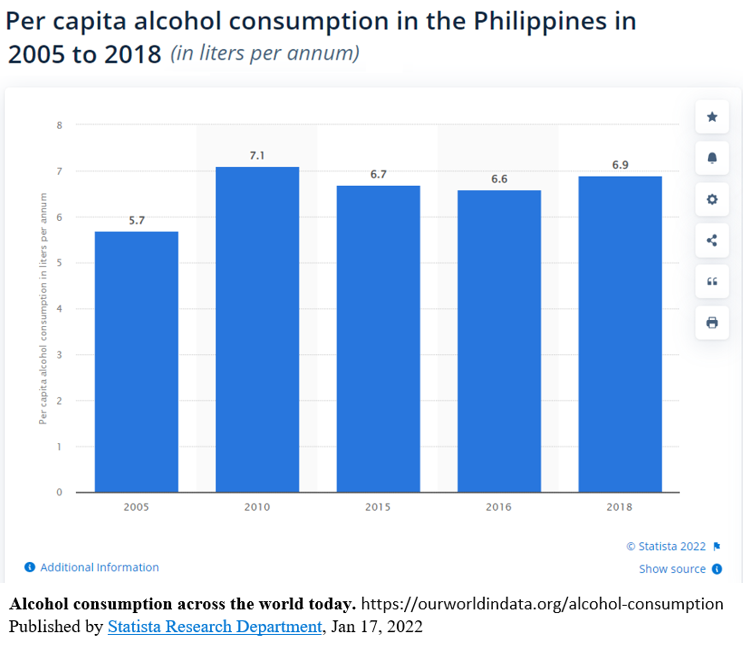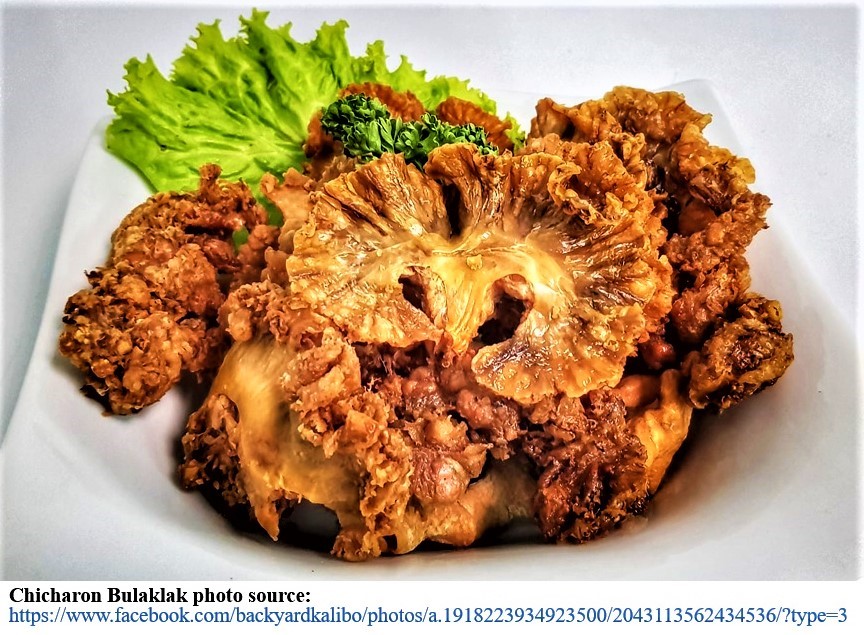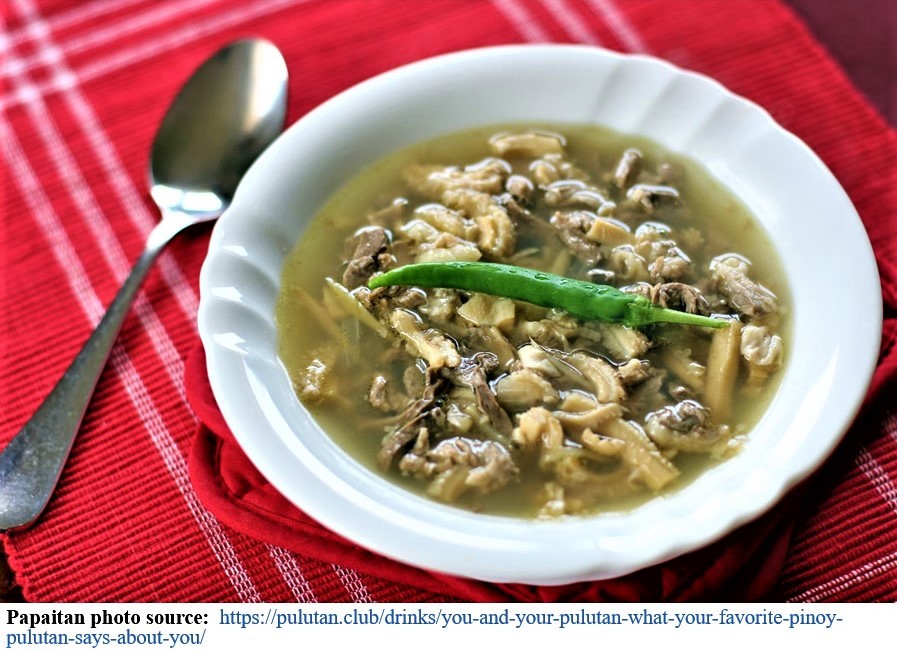By Virgilio C. Ventura
PART 2 of 2.
As we ended Part 1with two memorable sociocultural alcoholic drink ads that touched social sensitivities and thus made headlines, we now turn our attention to the threats that alcoholic beverages and some not so healthy pulutan bring to public health.
Alcohol drinking’s sociocultural benefits are always stated with great concern for moderation. While Filipinos are observed to be excessive drinkers even during the pre-colonial period, Mayo Clinic Staff (a distinguished US-based hospital) claims that: “Any potential benefits of alcohol are relatively small and may not apply to all individuals. In fact, the latest dietary guidelines make it clear that no one should begin drinking alcohol or drink more often on the basis of potential health benefits. For many people, the possible benefits don’t outweigh the risks and avoiding alcohol is the best course.”4/
How Alcohol Affects the Body
Dr. Brad Lander, clinical director of addiction medicine at The Ohio State University Wexner Medical Center in Columbus, explains in relation to alcohol addiction that “Once the brain adapts to the alcohol, it does not ‘unadapt. When alcoholics stop drinking, some of these changes continue to be a problem throughout their lives.”5/
Within the excretory system of the body alone, “An abundance of alcohol can harm the liver, whose job it is to break down harmful substances in the body. This can lead to hepatitis, jaundice, and cirrhosis, which is the buildup of scar tissue that eventually destroys the organ. Alcohol may cause kidney, bladder, and prostate inflammation.”6/
It is thus advised that: “If you don’t drink alcohol, there’s no reason to start. If you choose to drink, it’s important to have only a moderate (limited) amount. And some people should not drink at all, like women who are pregnant or might be pregnant — and people with certain health conditions.”7/
The concept of a drinking culture has of late been the focus of studies motivated by a policy discourse of drinking culture change. If the observation made by the 16th century Spanish chroniclers on the natives’ excessive drinking behavior happened today, the Philippines would indeed qualify as a focus for a national drinking culture change.

In defining the concept of drinking cultures, the study of Michael Savic et al. (2016)8/ has deviated from the limited consideration of alcohol consumption and alcohol problems to consider how the variable of consumption is affected by the “wider network of social, material and affective forces”. Quoting in part the study’s definition on drinking cultures, it asserts that: “Drinking cultures are generally described in terms of the norms around patterns, practices, use-values, settings and occasions in relation to alcohol and alcohol problems that operate and are enforced (to varying degrees) in a society (macro-level) or in a subgroup within society (micro-level).”
How Much is Too Much
Heavy or excessive drinking (also known as binging) has been defined by the Substance Abuse and Mental Health Services Administration (SAMHSA) of the US Department of Health and Human Services as: “5 or more alcoholic drinks on the same occasion on at least 1 day in the last 30 days.”9/ Excessive alcohol drinking is deemed “associated with general anti-social behavior affecting people’s general quality of life.”10/
Findings in a mobile phone survey (a total of 3,087 adult participants) conducted by the Department of Health (DOH) in January 2021 to assess the prevalence of risk factors for non-communicable diseases (NCDs)11/ bares that:
- Four in 10 Filipino adults (40.1%) reported past 30-day alcohol use where men used more alcohol than women (51.5% vs. 28.9%);
- One in three Filipinos (33.1%) reported high-risk and heavy alcohol use with consuming six or more alcoholic beverages in one sitting where again men engaged in greater numbers in binge alcohol consumption than women (43.2% vs. 22.9%).
The nongovernment organization Movendi International reports that “the Philippine government estimates a cost of P200 billion (about $4 billion) caused by alcohol harm annually.”12/

Be Health Friendly with Your Pulutan
Drinking with the accompaniment of finger food or pulutan can enhance the joy of tagay. Unfortunately, while tasty Filipino pulutan is part of our drinking culture, it is worth heeding to be moderate and selective in feasting on them.
This is most true for those offal types like chicharon bulaklak (pork intestines that looks like a flower when deep fried), isaw (grilled chicken intestines) or more so with papaitan (bitter soup preparation of goat innards) and asocena (dog meat). It should be noted that killing of dogs and consumption of dog meat has been banned since 1998 through Republic Act No. 8485 otherwise known as the Animal Welfare Act with exemptions for dogs killed and eaten as part of indigenous rituals.
Once again and in conclusion, MODERATE CONSUMPTION is key whether on our tagay or on our choice of pulutan. Our gradual change of drinking culture can go a long way in preserving our public health and thus our public outputs for a better society. END



NOTES:
4/ Alcohol use: Weighing risks and benefits – Mayo Clinic
5/ Kathleen Hall, 10 Essential Facts About Alcohol Abuse, March 17, 2016. https://www.everydayhealth.com/news/essential-facts-about-alcohol-abuse/
6/ Barbara “B” Atkins, 7 Things Drinking Alcohol Does to Your Body, Cone Health. https://www.conehealth.com/services/behavioral-health/7-things-drinking-alcohol-does-to-your-body/#:~:text=An%20abundance%20of%20alcohol%20can,kidney%2C%20bladder%20and%20prostate%20inflammation
7/ Drink Alcohol Only in Moderation.
https://health.gov/myhealthfinder/health-conditions/heart-health/drink-alcohol-only-moderation# :~:text=A%20moderate%20amount%20of%20alcohol%20means%3A,in%20a%20day%20for%20men
8/ Michael Savic, Robin Room, Janette Mugavin, Amy Pennay & Michael Livingston (2016) Defining “drinking culture”: A critical review of its meaning and connotation in social research on alcohol problems, Drugs: Education, Prevention and Policy, 23:4, 270-282, DOI: 10.3109/09687637.2016.1153602 and citing: Duff, C. (2013). The social life of drugs. International Journal of Drug Policy, 3, 167–172. doi: 10.1016/j.drugpo.2007.07.003 [Crossref], [Web of Science ®], [Google Scholar]
9/ Barbara “B” Atkins, 7 Things Drinking Alcohol Does to Your Body, Cone Health. https://www.conehealth.com/services/behavioral-health/7-things-drinking-alcohol-does-to-your-body/#:~:text=An%20abundance%20of%20alcohol%20can,kidney%2C%20bladder%20and%20prostate%20inflammation
10/ Diana Rose Q. Salas and Jenifer E. Hinlo, Alcohol Consumption and Crime Incidence in the Philippines, University of Southeastern Philippines, https://psa.gov.ph/sites/default/files/8.6.3%20Alcohol%20Consumption%20and%20Crime%20Incidence%20in%20the%20Philippines%20.pdf
11/ Philippines: New Survey Data Illustrate Alcohol Harm, But Alcohol Taxation Provides Solution, Movendi International, August 26, 2021. https://movendi.ngo/news/2021/08/26/philippines-new-survey-data-illustrate-alcohol-harm-but-alcohol-taxation-provides-solution/
12/ Philippines: Alcohol Harm Costs P200 Billion Yearly.
https://movendi.ngo/news/2019/09/23/phillipines-alcohol-harm-costs-p200-billion-yearly/








